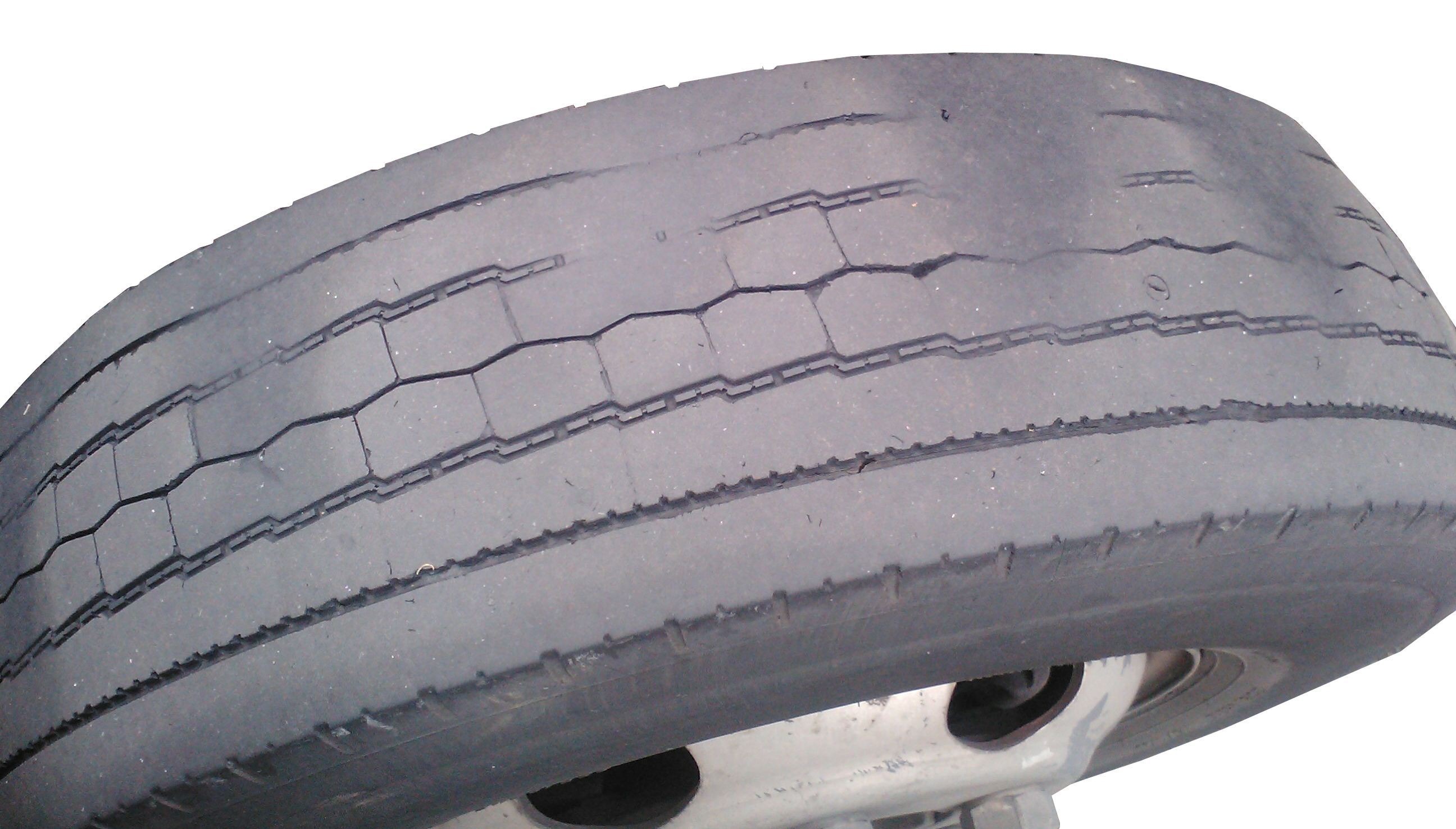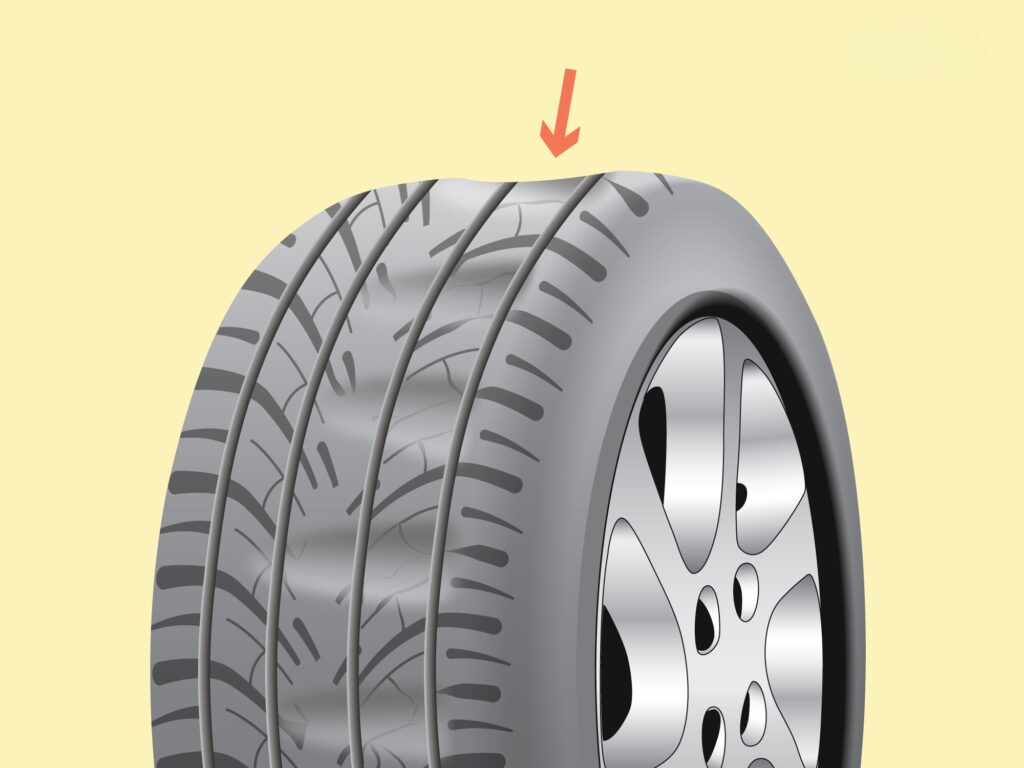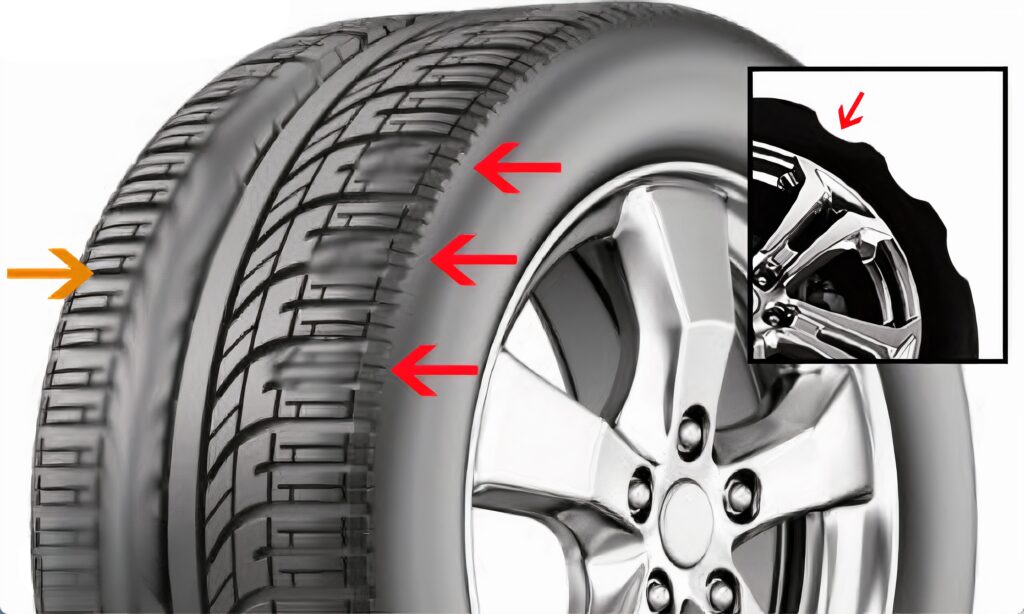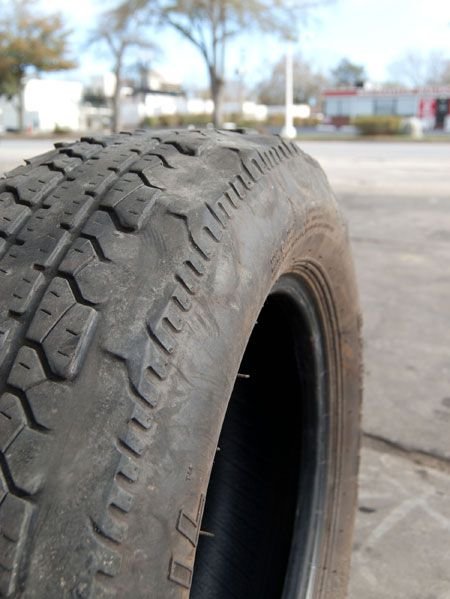Tire cupping is an irregular tire wear pattern. It appears as scalloped or wavy indentations on the tire surface.
Tire cupping often results from suspension issues or imbalanced wheels. It reduces vehicle stability and causes uneven tire wear, leading to a bumpy ride. Drivers might notice a thumping noise as they travel. Regular tire maintenance helps in early detection and prevention.
Ensuring proper wheel alignment and suspension health extends tire life. It’s crucial to address any signs of tire cupping promptly. Ignoring it can lead to costly repairs and compromised driving safety. Proper tire care improves vehicle performance and ensures a smooth driving experience. Regular inspections by professionals can help detect and correct tire cupping early.

Introduction To Tire Cupping
Tire cupping is a common issue faced by many drivers. It affects the performance of your car. Understanding this problem helps maintain vehicle safety. This section will explain what tire cupping is and its symptoms.
Definition
Tire cupping occurs when the surface of the tire wears unevenly. This creates a series of high and low points, similar to a wave pattern. These irregularities often result from suspension issues or wheel imbalance. It can also be caused by poor tire maintenance.
Common Symptoms
Recognizing the signs of tire cupping early is crucial. Some common symptoms include:
- Vibrations felt through the steering wheel.
- Unusual noises coming from the tires.
- Visible uneven wear on the tire surface.
- Reduced traction and handling.
These symptoms can affect driving comfort and safety. Regular tire inspections can help catch these issues early.
Visual Signs Of Tire Cupping
Tire cupping is a common issue that affects many vehicles. Visual signs can help in identifying this problem early. Recognizing these signs ensures safety and optimal tire performance.
Irregular Wear Patterns
One of the first signs is irregular wear patterns on the tires. Look for patches where the tread appears uneven. These patches may look like small, scooped-out areas. This irregular wear indicates potential tire cupping.
Noise And Vibration
Noise and vibration are other indicators of tire cupping. You may hear a thumping noise while driving. The vehicle may also vibrate more than usual. These signs suggest that the tires are not wearing evenly.
| Sign | Description |
|---|---|
| Irregular Wear Patterns | Patches of uneven tread wear |
| Noise | Thumping sound while driving |
| Vibration | Increased vehicle vibration |
- Inspect tires regularly for wear patterns.
- Listen for unusual noises while driving.
- Feel for vibrations in the steering wheel.
Primary Causes
Tire cupping is a common issue many drivers face. Understanding the primary causes can help prevent it. Let’s dive into the main reasons for tire cupping.
Suspension Issues
Suspension problems are a major cause of tire cupping. The suspension system includes springs, shocks, and struts. These parts keep your ride smooth and stable. When any of these parts wear out, the tires do not stay in contact with the road. This leads to uneven wear and cupping.
Here are some common suspension issues that cause tire cupping:
- Worn-out shock absorbers – These fail to absorb road impacts.
- Loose or damaged springs – These cause the tires to bounce.
- Faulty struts – These make the vehicle unstable.
Imbalanced Tires
Imbalanced tires can also lead to tire cupping. When tires are not balanced, they do not rotate evenly. This causes parts of the tire to wear out faster.
Here’s a simple table showing the effects of imbalanced tires:
| Imbalance Type | Effect on Tires |
|---|---|
| Front Tires | Steering wheel vibration |
| Rear Tires | Vibration in the seat |
To prevent this, get your tires balanced regularly. It helps in maintaining even tire wear.

Impact On Vehicle Performance
Tire cupping affects your vehicle’s performance significantly. It can lead to a rough ride and uneven tire wear. This problem can also impact your vehicle’s handling and fuel efficiency. Understanding these impacts can help you address tire cupping early.
Handling Problems
Tire cupping often causes handling problems. Your car may feel unstable while driving. The steering wheel might vibrate. This can make it hard to control your vehicle. You might notice the vehicle pulling to one side. These issues can be dangerous if not fixed.
Reduced Fuel Efficiency
Cupped tires can reduce fuel efficiency. Uneven tire wear increases rolling resistance. This means your engine has to work harder. As a result, your vehicle uses more fuel. This can lead to higher fuel costs over time.
| Issue | Impact |
|---|---|
| Handling Problems | Unstable driving, steering wheel vibration, vehicle pulling to one side |
| Reduced Fuel Efficiency | Increased rolling resistance, higher fuel consumption, higher costs |
- Handling Problems: Unstable driving and steering issues
- Reduced Fuel Efficiency: Higher fuel consumption
Inspection Methods
Understanding tire cupping is crucial for vehicle safety. One must regularly inspect tires to prevent this issue. Below are the inspection methods to detect tire cupping.
Visual Inspection
Start with a thorough visual inspection of each tire. Look for irregular wear patterns. Pay attention to any scalloped or wavy areas. These are signs of tire cupping. Use a flashlight to see better in dim light. Rotate the tire and inspect the entire surface. Don’t miss the inner side of the tire. Uneven surfaces indicate a problem. Check the tread depth with a gauge. Uneven tread depth can also signal cupping.
Professional Assessment
A professional assessment is more detailed. Mechanics use special tools to measure tire wear. They check for alignment issues. Misalignment often leads to cupping. Professionals also inspect suspension components. Worn-out parts can cause uneven tire wear. They may perform a road test. This helps in identifying vibrations linked to cupping. They can also provide solutions. Sometimes, tire replacement is necessary. Regular professional checks ensure your tires are in good shape.
Preventative Measures
Tire cupping is a serious issue. It affects your vehicle’s performance and safety. Preventative measures are essential to avoid this problem. Following simple steps can keep your tires in good condition.
Regular Maintenance
Regular maintenance is key to preventing tire cupping. Schedule periodic checks with a trusted mechanic. Ensure the tires are balanced and aligned. Unbalanced tires wear unevenly, leading to cupping. Also, rotate your tires every 5,000 to 7,500 miles. This helps in even wear across all tires.
Proper Tire Inflation
Proper tire inflation is crucial. Always keep your tires inflated to the manufacturer’s recommended levels. Under-inflated tires can cause excessive wear on the outer edges. Over-inflated tires can lead to wear in the center. Both conditions contribute to tire cupping. Use a reliable gauge to check tire pressure monthly. Make sure to adjust the pressure as needed.
Repair And Replacement Options
Tire cupping is a serious issue that affects your driving safety. Identifying the best repair and replacement options is crucial. This section will guide you through the essential steps to address tire cupping.
Tire Rotation
Regular tire rotation can help prevent tire cupping. Rotating tires ensures even wear. Follow a tire rotation pattern every 6,000 to 8,000 miles. This helps extend the life of your tires.
Here is a simple rotation pattern to follow:
- Front tires to the rear
- Rear tires to the front
- Cross the tires if necessary
A tire rotation pattern can be vital for maintaining balance. It helps avoid uneven tread wear. Regular checks and rotations keep your car safe.
Replacing Damaged Tires
If your tires show severe cupping, replace them. Damaged tires reduce vehicle control. New tires ensure safety and performance.
Here are steps to follow for replacing damaged tires:
- Inspect all tires for damage
- Choose the right tire size
- Install new tires with professional help
Always consider the tire type and brand. Quality tires last longer and offer better safety. Tire cupping can be dangerous, so act promptly.
| Issue | Solution |
|---|---|
| Tire Cupping | Rotate or replace tires |
| Uneven Wear | Regular tire checks |
Cost Implications
Tire cupping can lead to several cost implications for vehicle owners. Understanding these costs can help in making informed decisions. This section explores the immediate and long-term financial impacts of tire cupping.
Repair Costs
Repair costs for tire cupping can vary based on the severity. Basic repairs might include tire rotation and balancing. These services can range from $15 to $50 per tire. If the damage is extensive, a tire replacement may be necessary. New tires can cost anywhere from $100 to $300 each, depending on the brand and type.
| Service | Cost Range |
|---|---|
| Tire Rotation | $15 – $50 per tire |
| Tire Balancing | $15 – $50 per tire |
| Tire Replacement | $100 – $300 per tire |
Long-term Savings
Addressing tire cupping early can lead to long-term savings. Regular maintenance can extend the life of your tires. This reduces the frequency of replacements. Well-maintained tires also improve fuel efficiency. This can save money on fuel in the long run.
- Extend tire life with regular maintenance.
- Save on fuel costs with efficient tires.
- Avoid frequent replacements by addressing issues early.
Investing in quality tires and regular check-ups can save money over time. Proper alignment and suspension checks can also prevent tire cupping. This proactive approach minimizes unexpected expenses.

Frequently Asked Questions
What Is The Main Cause Of Tire Cupping?
Tire cupping is caused by irregular wear due to misaligned wheels, unbalanced tires, or worn suspension components. Regular maintenance helps prevent this issue.
Is It Safe To Drive On Cupped Tires?
Driving on cupped tires is not safe. They cause reduced traction, increased stopping distance, and uneven wear. Replace them immediately.
How Do You Fix Cupping Tires?
Fix cupping tires by rotating them, aligning the wheels, and balancing them. Replace damaged suspension components. Maintain correct tire pressure.
What Does A Cupped Tire Sound Like?
A cupped tire sounds like a rhythmic thumping or roaring noise. The sound gets louder as speed increases.
Conclusion
Understanding tire cupping is essential for vehicle safety and performance. Regular inspections and maintenance can prevent this issue. Always ensure your tires are properly inflated and balanced. Replace damaged tires promptly to avoid further problems. By staying vigilant, you can enjoy a smoother and safer driving experience.





















